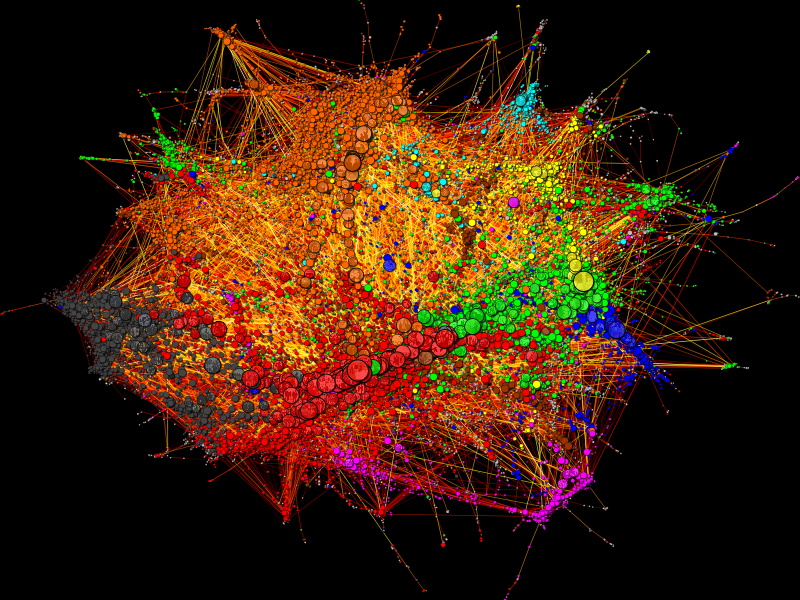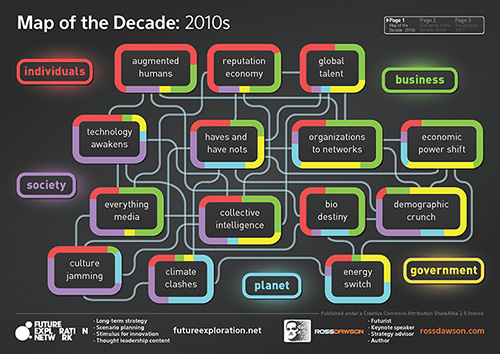German magazine Screen.TV recently asked 7 prominent media figures for their views on the future of TV:
“What will you watch on television in ten years, and what do you imagine your TV will look like?”
Here are our responses – links are translated by Google from the German:
– Jane Barratt, President, Young & Rubicam
– Jimmy Wales, Founder, Wikipedia
– Chuck Deckeris, CEO, Mediacom
– Chuck Porter, CEO Crispin, Porter & Bogusky
– Samir Husni, “Mr. Magazine“
– Ross Dawson, Futurist (this link to the German version as the original English is below)
– Eric Day, Director Brand Strategy, Microsoft Advertising
Here is my contribution in the original English:
The future of television is really the future of video, in which moving images from existing broadcast and cable TV merge with thousands of new channels, all intermingling across a plethora of devices. The power of television and great programming has been evident for decades, and is becoming even more pronounced as we shift into an all-embracing media economy.
At the same time an extraordinary growth of video content, ranging in quality from the abysmal to the transcendent, will add to create a potent mix for users.
In the home space we will have screens in most rooms, with our main media space generating a fully immersive experience that includes 3D without glasses and the ability to act out our own roles in TV programming. When we are out of the home, video glasses will sometimes be used to create a full screen experience, with rollable screens allowing pocketable devices to generate a rich video view.
While much television and video content will be time-shifted, the best video content distributors (remember this is a post-channel world) will build communities of viewers around live programming. Much of the future of television, and especially its revenue models, will revolve around community.
See my post yesterday on The Future of TV is community for more details on the last point.




